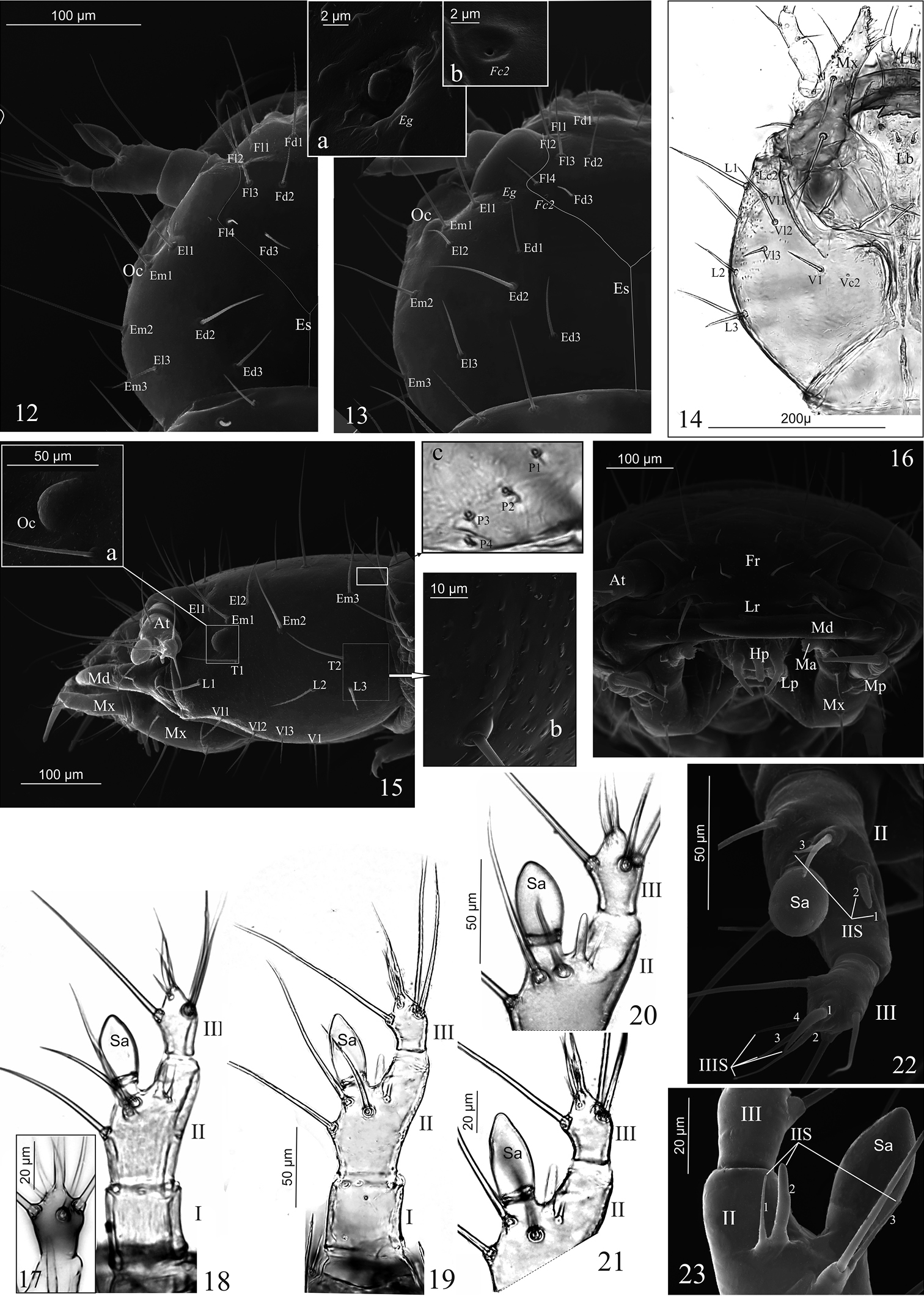
|
||
|
D. aequata (12, 13, 15, 16–18, 20, 22, 23) D. linearis (14, 19, 21). First larval instar (12, 17), mature larva (13–16, 18–23), 12–16 head in dorsal (12, 13), ventral (14), lateral (15) and frontal (16) aspect with glands (13a, 13b), ocellus (15a), microstructure (15b) and posterior setae (15c), 17–23 right antenna, article III in dorsal aspect (17), entire in dorsal aspect (18, 19), anterior region in dorsal aspect (20, 21), entire in apical aspect (22), anterior region of article II in ventral aspect (23) Abbreviations: I–III antennal articles, IIS IIIS solenidia of antennal article II or III, At antenna, Ed epicranial dorsal setae, Eg epicranial gland, El epicranial lateral setae, Em epicranial marginal setae, Es epicranial suture, Fc frontal campaniform sensilla, Fd frontal dorsal setae, Fl frontal lateral setae, F frons, Hp hypopharynx, L lateral setae, Lb labium, Lc lateral campaniform sensilla, Lp labial palp, Lr labrum, Ma mala, Md mandible, Mx maxilla, Mp maxillary palp, Oc ocellus, P posterior setae, Pl labial palp, Pm maxillary palp, Sa sensory appendage, T temporal setae, V ventral setae, Vc ventral campaniform sensilla, Vl ventral lateral setae. |